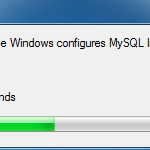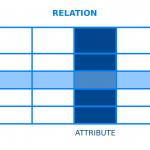MySQL 连接器C/C++
这是 MySQL Connector/C++ 的一个版本,它是用于与 MySQL 服务器通信的 C++ 接口。
有关详细信息,请访问官方MySQL 连接器C/C++ 文档。
许可
有关详细信息,请参阅此存储库中提供的文件 README 和 LICENSE,以及文档中的法律声明。
下载并安装
MySQL Connector/C++ 可以从可以从MySQL 下载页面下载的预编译包安装。MySQL 在线手册中描述了从二进制分发安装 Connector/C++ 的过程
从源头构建
MySQL Connector/C++ 可以从源代码安装。请查看MySQL 在线手册
GitHub 存储库
此存储库包含最新发布版本的 MySQL 连接器/C++ 源代码。您应该期望在此处和最新发布的 Connector/C++ 包中看到相同的内容。
示例代码
#include <iostream>
#include <mysqlx/xdevapi.h>
using ::std::cout;
using ::std::endl;
using namespace ::mysqlx;
int main(int argc, const char* argv[])
try {
const char *url = (argc > 1 ? argv[1] : "mysqlx://root@127.0.0.1");
cout << "Creating session on " << url
<< " ..." << endl;
Session sess(url);
cout <<"Session accepted, creating collection..." <<endl;
Schema sch= sess.getSchema("test");
Collection coll= sch.createCollection("c1", true);
cout <<"Inserting documents..." <<endl;
coll.remove("true").execute();
{
DbDoc doc(R"({ "name": "foo", "age": 1 })");
Result add =
coll.add(doc)
.add(R"({ "name": "bar", "age": 2, "toys": [ "car", "ball" ] })")
.add(R"({ "name": "bar", "age": 2, "toys": [ "car", "ball" ] })")
.add(R"({
"name": "baz",
"age": 3,
"date": { "day": 20, "month": "Apr" }
})")
.add(R"({ "_id": "myuuid-1", "name": "foo", "age": 7 })")
.execute();
std::list<string> ids = add.getGeneratedIds();
for (string id : ids)
cout <<"- added doc with id: " << id <<endl;
}
cout <<"Fetching documents..." <<endl;
DocResult docs = coll.find("age > 1 and name like 'ba%'").execute();
int i = 0;
for (DbDoc doc : docs)
{
cout <<"doc#" <<i++ <<": " <<doc <<endl;
for (Field fld : doc)
{
cout << " field `" << fld << "`: " <<doc[fld] << endl;
}
string name = doc["name"];
cout << " name: " << name << endl;
if (doc.hasField("date") && Value::DOCUMENT == doc.fieldType("date"))
{
cout << "- date field" << endl;
DbDoc date = doc["date"];
for (Field fld : date)
{
cout << " date `" << fld << "`: " << date[fld] << endl;
}
string month = doc["date"]["month"];
int day = date["day"];
cout << " month: " << month << endl;
cout << " day: " << day << endl;
}
if (doc.hasField("toys") && Value::ARRAY == doc.fieldType("toys"))
{
cout << "- toys:" << endl;
for (auto toy : doc["toys"])
{
cout << " " << toy << endl;
}
}
cout << endl;
}
cout <<"Done!" <<endl;
}
catch (const mysqlx::Error &err)
{
cout <<"ERROR: " <<err <<endl;
return 1;
}
catch (std::exception &ex)
{
cout <<"STD EXCEPTION: " <<ex.what() <<endl;
return 1;
}
catch (const char *ex)
{
cout <<"EXCEPTION: " <<ex <<endl;
return 1;
}
文档
https://github.com/mysql/mysql-connector-cpp
https://dev.mysql.com/doc/connector-cpp/1.1/en/connector-cpp-examples-complete-example-1.html
https://learn.microsoft.com/en-us/azure/mysql/single-server/connect-cpp
使用 C/C++ 的数据库连接
SQL(结构化查询语言)是第四代语言 (4GL),用于定义、操作和控制 RDBMS(关系数据库管理系统)。
在开始正文之前,让我们熟悉使用的工具。
编译器:带有 MinGW 编译器的 Code::Blocks IDE
下载链接: Binary Download Code::Blocks 是一个交叉编译器(它可以在任何平台上运行,如 Windows、Linux 和 Mac),并且可以免费下载。此 IDE 专为 C 和 C++ 设计,易于使用。
API:我们将使用 SQLAPI++ 库
下载链接: SQLAPI下载
SQLAPI++ 是一个 C++ 库(基本上是一组头文件),用于访问多个 SQL 数据库(Oracle、SQL Server、DB2、Sybase、Informix、InterBase、SQLBase、MySQL、PostgreSQL、SQLite、SQL Anywhere 和 ODBC)。它易于实现且简单。
OCCI: Oracle C++ 调用接口
下载链接:OCCI C++ 下载 OCCI 是由数据库公司 ORACLE 定义的接口,它为 C++ 程序员定义了一个舒适的接口,可以使用类似于 SQL 语句的参数访问 Oracle 数据库。该接口适用于 ORACLE 9i、ORACLE 10,并随 Oracle 一起提供。
我们必须下载并安装以上三个(如果我们没有的话)。现在我们几乎可以开始了。
开始前的一些设置: -> 打开 code::blocks IDE 并转到或点击设置->编译器和调试器设置(您现在将看到全局编译器设置) -> 现在点击链接器设置中的“链接器设置”点击在添加按钮上并添加以下对于Windows 操作系统:代码:
C:\SQLAPI\lib\libsqlapiddll.a C:\Program Files\CodeBlocks\MinGW\lib\libuser32.a C:\Program Files\CodeBlocks\MinGW\lib\libversion.a C:\Program Files\CodeBlocks\MinGW\ lib\liboleaut32.a C:\Program Files\CodeBlocks\MinGW\lib\libole32.a
这些将在您的 SQLAPI++ 中找到(如果您尚未在 C: 驱动器中提取,则选择适当的位置并将提到的文件添加到链接器设置)。上述代码用于添加库文件以连接 C/C++ 程序与 SQLAPI。基本上,有2个步骤:
- 连接到数据库(和错误处理) C++代码:
// C++ program for connecting to database (and error handling)
#include<stdio.h>
#include<SQLAPI.h> // main SQLAPI++ header
int main(int argc, char* argv[])
{
// create connection object to connect to database
SAConnection con;
try
{
// connect to database
// in this example, it is Oracle,
// but can also be Sybase, Informix, DB2
// SQLServer, InterBase, SQLBase and ODBC
con.Connect ("test", // database name
"tester", // user name
"tester", // password
SA_Oracle_Client); //Oracle Client
printf("We are connected!\n");
// Disconnect is optional
// autodisconnect will occur in destructor if needed
con.Disconnect();
printf("We are disconnected!\n");
}
catch(SAException & x)
{
// SAConnection::Rollback()
// can also throw an exception
// (if a network error for example),
// we will be ready
try
{
// on error rollback changes
con.Rollback ();
}
catch(SAException &)
{
}
// print error message
printf("%s\n", (const char*)x.ErrText());
}
return 0;
}
- 输出:
We are Connected! We are Disconnected!
- 执行一个简单的 SQL 命令现在,我们将执行一个简单的 SQL 查询。首先,为数据库创建一个表:create table tb1(id number, name varchar(20);
现在,在您的 con.connect 之后建立与数据库的连接;方法你应该使用 cmd.setCommandText 方法将查询传递给数据库,如下所示:
con.Connect("test", "tester", "tester", SA_Oracle_Client);
cmd.setCommandText("create table tb1(id number, name varchar(20));”);
- 现在,要执行查询,我们必须使用以下命令: cmd.Execute(); 完整代码:
#include<stdio.h>
#include <SQLAPI.h> // main SQLAPI++ header
int main(int argc, char* argv[])
{
SAConnection con; // connection object to connect to database
SACommandcmd; // create command object
try
{
// connect to database (Oracle in our example)
con.Connect("test", "tester", "tester", SA_Oracle_Client);
// associate a command with connection
// connection can also be specified in SACommand constructor
cmd.setConnection(&con);
// create table
cmd.setCommandText("create table tbl(id number, name varchar(20));");
cmd.Execute();
// insert value
cmd.setCommandText("Insert into tbl(id, name) values (1,”Vinay”)");
cmd.setCommandText("Insert into tbl(id, name) values (2,”Kushal”)");
cmd.setCommandText("Insert into tbl(id, name) values (3,”Saransh”)");
cmd.Execute();
// commit changes on success
con.Commit();
printf("Table created, row inserted!\n");
}
catch(SAException &x)
{
// SAConnection::Rollback()
// can also throw an exception
// (if a network error for example),
// we will be ready
try
{
// on error rollback changes
con.Rollback();
}
catch(SAException &)
{
}
// print error message
printf("%s\n", (const char*)x.ErrText());
}
return 0;
}
正如我们所知,Oracle 不是自动提交的(提交是在数据库中永久反映数据),所以我们必须提交它。
con.Commit();
同样,我们可以在发生异常时回滚事务,因此我们使用:
con.Rollback();
为了删除一行,我们使用这个命令。
cmd.setCommandText("delete from tb1 where id= 2");
因此,在本文结束时,我们已经学习了如何将 C/C++ 程序连接到数据库并执行操作。




